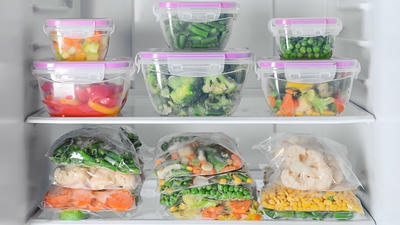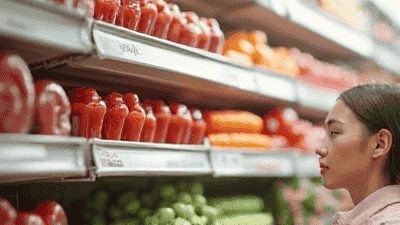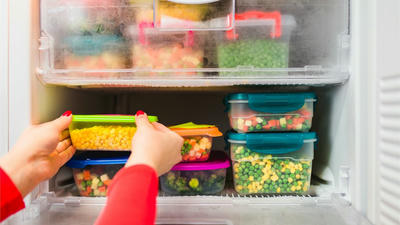
Freezing is one of the most effective methods to preserve food, enhancing shelf life while maintaining nutritional value and flavor. With the right techniques, you can freeze a variety of ingredients successfully, reducing food waste and saving money. Whether you are dealing with seasonal produce, leftovers, or meal prepping, mastering the art of freezing is a valuable skill in the kitchen.
Freezing works by lowering the temperature of food, halting the growth of bacteria, yeasts, and molds that cause food spoilage. When food is frozen, water inside the food forms ice crystals. The size of these crystals can affect the texture of the food after thawing. Slower freezing can lead to larger ice crystals, which can rupture cell walls and change the structure of the food. Fast freezing, on the other hand, creates smaller crystals that preserve the texture better.
Extended Shelf Life: Freezing can extend the shelf life of many ingredients for months or even years, depending on the food type.
Preservation of Nutrients: Properly frozen food retains a greater portion of its nutrients compared to other preservation methods like canning.
Reduced Food Waste: Freezing allows you to store excess food, reducing the likelihood of spoilage and waste.
Convenience: Having frozen ingredients on hand enables quick meal preparation.
Cost Savings: Purchasing seasonal ingredients in bulk and freezing them can lead to significant savings.

To freeze ingredients correctly, certain tools and equipment can make the process more efficient:
The most important tool is, of course, the freezer. Whether you have a standard refrigerator freezer, a standalone upright or chest freezer, ensuring that your freezer is functioning properly is crucial for maintaining food quality.
Heavy-duty freezer bags are an excellent choice for freezing many ingredients. They are designed to withstand low temperatures and prevent freezer burn. Make sure to choose bags that are specifically labeled for freezer use, as they are thicker and more durable than regular zip-top bags.
For some ingredients, airtight containers with tight-fitting lids work exceptionally well. Glass or plastic containers can be used for liquids, casseroles, and other foods that don’t fit well in bags.
A vacuum sealer removes air from bags and seals them tightly, reducing the risk of freezer burn and extending shelf life. This tool is particularly beneficial for meats, fish, and delicate items.
Use a permanent marker to label bags and containers with the contents and freezing date. This helps you keep track of how long items have been in the freezer and ensures you use them before they lose quality.
For freezing small quantities of liquids, herbs, or purees, ice cube trays are handy. They allow you to freeze small, manageable portions that can be easily added to recipes.
The way you prepare food for freezing can significantly impact its quality after thawing. Here are some general guidelines:
Before freezing fruits and vegetables, wash them thoroughly under running water. This step removes dirt, pesticides, and bacteria. For leafy greens, consider soaking them in a bowl of water to remove any hidden dirt.
Blanching is scalding vegetables in boiling water for a short period, then rapidly cooling them in ice water. This process helps preserve color, flavor, and nutrients. It also slows down enzyme activity that can lead to spoilage. Here’s a quick blanching process:
For fruits and vegetables, trim and cut them into uniform sizes before freezing. This not only facilitates even freezing but also makes it easier to portion them later for cooking.
Once cleaned, blanched, and cut, portion the ingredients into freezer bags or containers, leaving space for expansion. For liquids, leave about half an inch of headspace at the top of the container.

Different ingredients require different approaches to freezing. Here’s how to freeze commonly used ingredients correctly:
For freezing meats:
Fresh herbs can be chopped and mixed with olive oil before freezing in ice cube trays. This method provides ready-to-use herb cubes for cooking.
How you thaw frozen ingredients can impact the texture and flavor. Here are several safe methods:
The safest method is to transfer frozen ingredients to the refrigerator and allow them to thaw overnight. This method maintains an even, safe temperature.
For quicker thawing, place sealed bags of food in cold water. Change the water every 30 minutes to ensure it stays cold. This method is great for smaller portions.
Microwaves often have a defrost setting that allows for quick thawing. This method is suitable for smaller items, but be cautious as some areas can start to cook while others remain frozen.
Many meats, vegetables, and certain meals can be cooked directly from frozen. Adjust cooking times accordingly, as frozen items will take longer to cook through.

Not Using Proper Containers: Using regular zip-top bags can lead to freezer burn. Invest in heavy-duty freezer bags or vacuum-sealable options.
Overfilling Containers: Leave headspace to allow for expansion and prevent the lid from warping, which can cause leaks.
Failing to Label: Not labeling your frozen items can lead to confusion later on. Always mark the date and contents of each item.
Freezing High-Water-Content Fruits and Vegetables: Foods like cucumbers and lettuce can become mushy when thawed. Consider cooking these items instead of freezing them raw.
Freezing Items Without Blanching: Blanching vegetables helps retain color and nutrients. Avoid skipping this vital step for best results.
Freezing food is a practical and effective way to extend the shelf life of ingredients while retaining their quality and flavor. By understanding proper freezing techniques, investing in the right tools, and preparing your food appropriately, you can make the most of your freezer space and reduce food waste.
From fruits and vegetables to meats and meals, mastering the art of freezing allows you to enjoy seasonal flavors year-round, save money, and streamline meal preparations. With these tips and techniques, you can build a well-stocked freezer that simplifies cooking and enhances your culinary adventures.
As you incorporate freezing into your kitchen routine, look forward to the convenience and versatility it brings. You'll be empowered to preserve and enjoy your favorite ingredients for months to come!